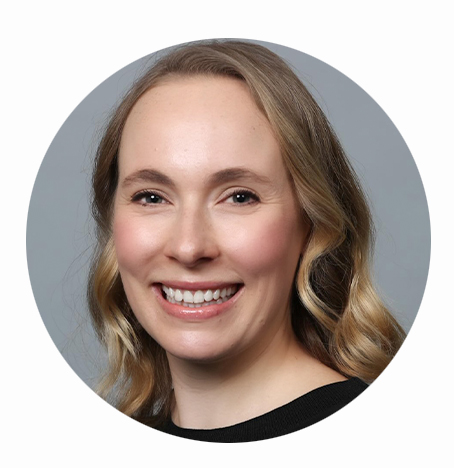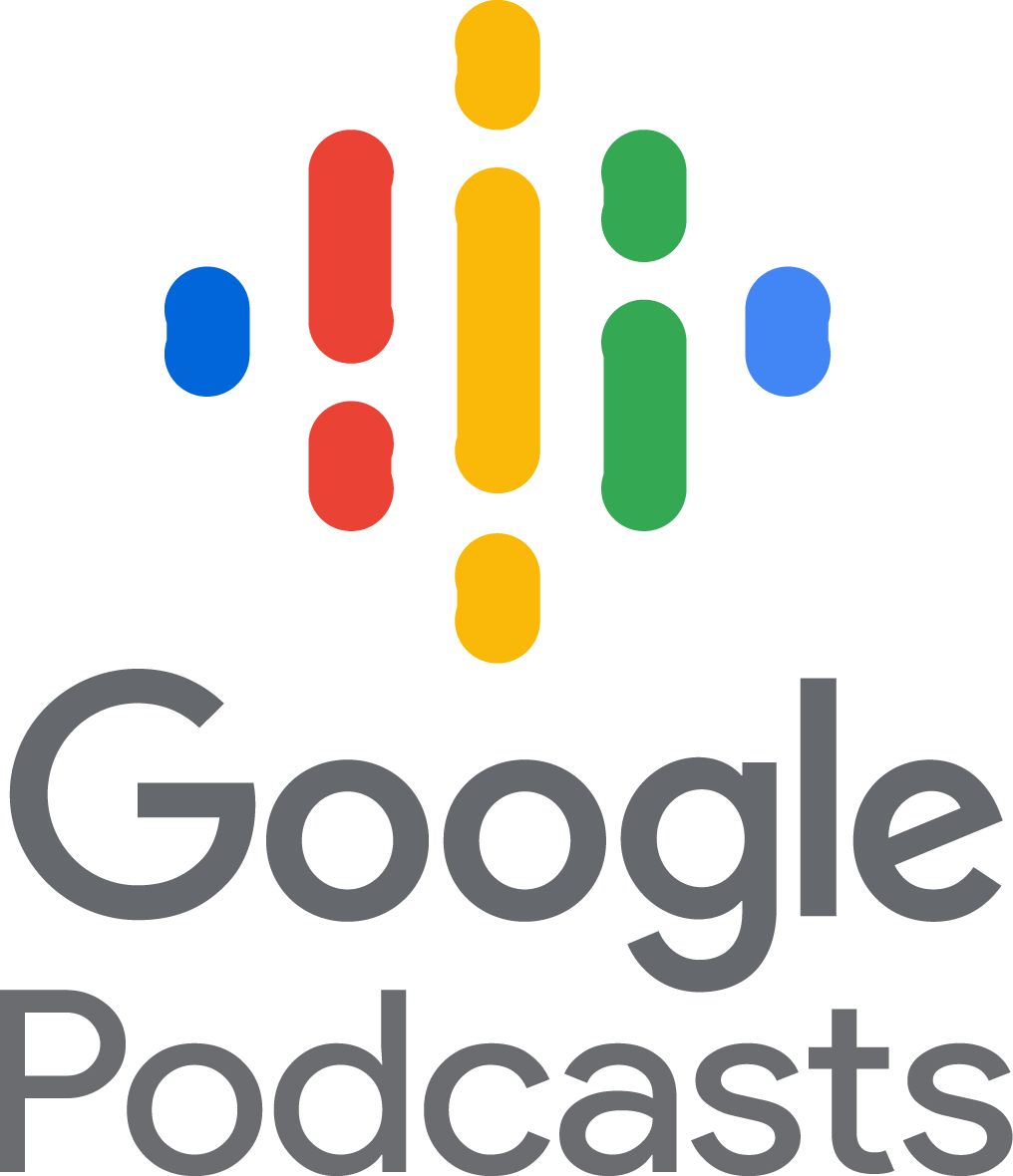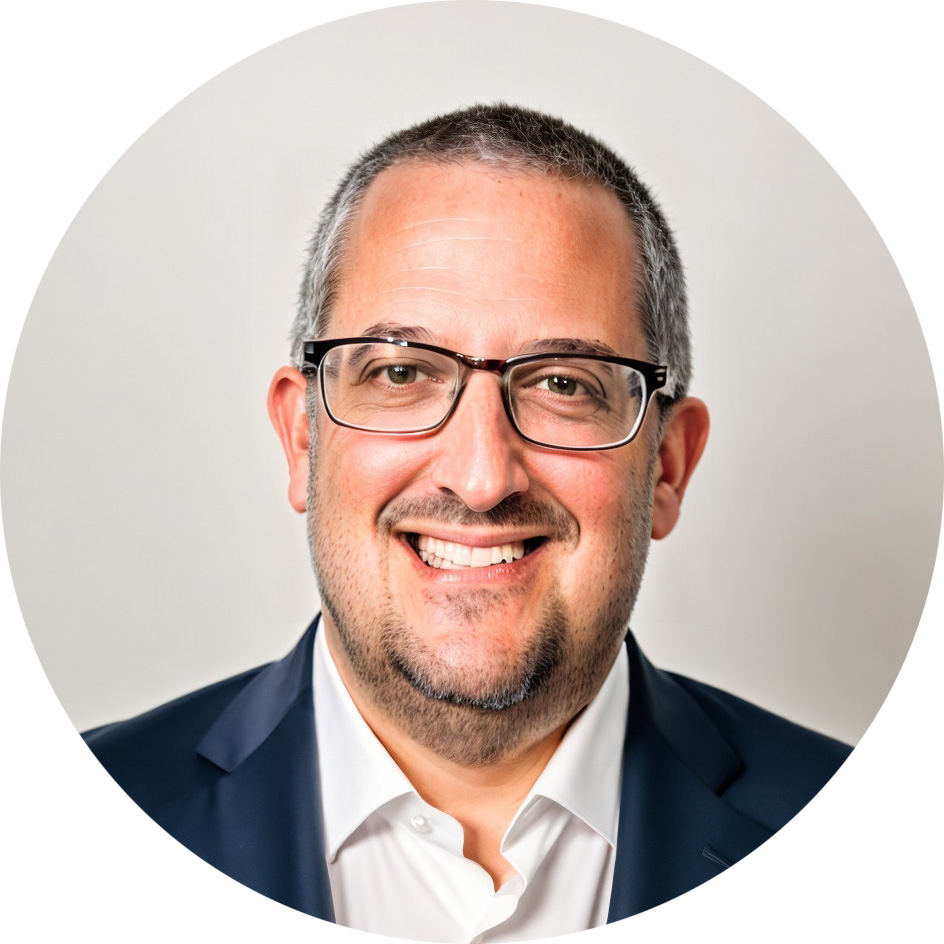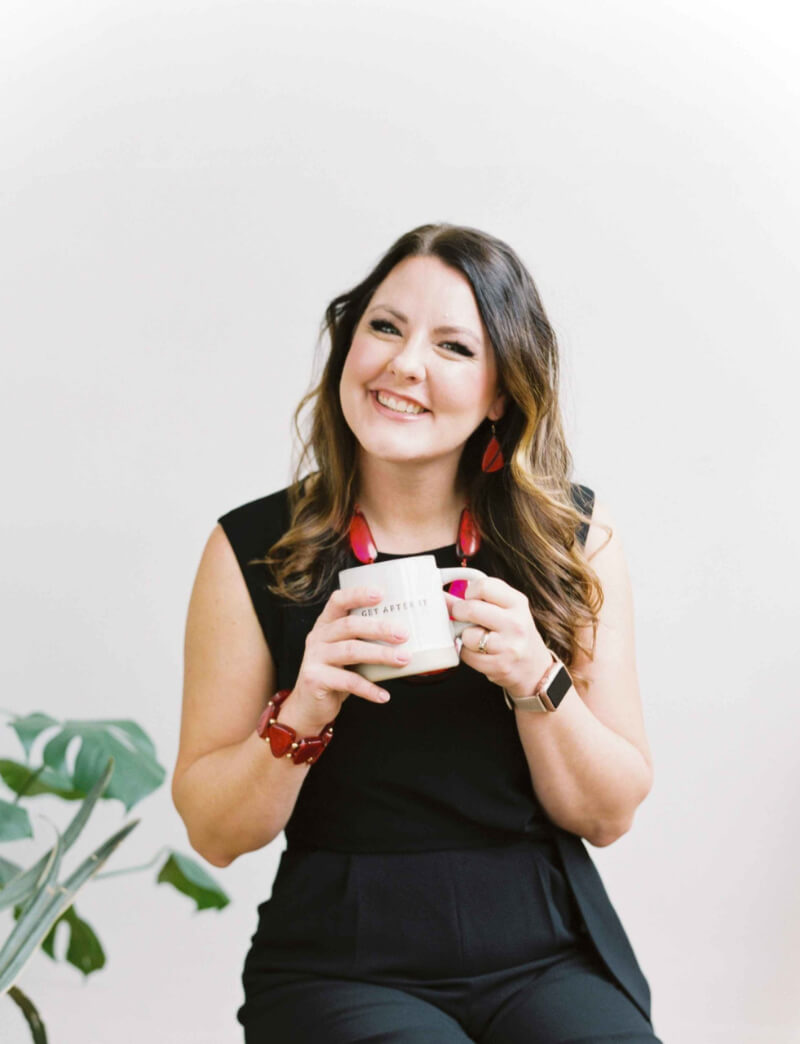Lara Schmoisman 0:05
This is Coffee Number Five. I’m your host, Lara Schmoisman. Hi, everyone. Welcome back to Coffee Number Five. I always tell you that you can meet people in the most unusual situations and the most unexpected places. And this is what happened to our guests today. We were both under the rain in New York after an event, and we got talking. And today she’s here. And actually, we’ve been collaborating quite a lot, and were able to meet over the year to that since we met and I’m so grateful for this connection. So welcome, Anna Mayo, Mayo right? Mayo, okay, yeah, I always have problems with last names, you guys know that. Welcome, and I’m so excited that you’re here today.
Anna Mayo 0:54
Thanks for having me. I’m really excited to chat I know we’ve we’ve, we’ve had our fortuitous meeting in the rain. And then we’ve collaborated a bunch over the past year. So it’s, it’s great to chat. As always,
Lara Schmoisman 1:05
I’m so grateful for this because meeting you I will say well to be part of one of the mentors of the trailblazers in Nielsen IQ, which is an incredible opportunity for any indie brand in the beer industry. They have access to incredible data, but we’ll get to that. So Anna, how did you get to be one of the BPS at Nielsen that is just a global brand is everywhere. I remember growing up in Argentina and listening. Because my background is in television, I was always there, the Nielsen ratings. But today, Nielsen is so much more than that.
Anna Mayo 1:45
Yeah, yeah, absolutely. So actually, we split a few years ago. So the Nielsen ratings pieces is a different company. And we are Nielsen IQ. So we measure everything that’s happening with the consumer. So where they’re shopping, what they’re buying, how much they’re spending, what sort of channels have their shopping in focus specifically on that area in the CPG space. So get a lot of people know us for the ratings. But that’s not part of business anymore. But yeah, so I’ve been with Nielsen IQ for about 10 years now. So I started out, I worked with the Nestle team, specifically on the Nestle waters team. So I’m a bit of an expert in bottled water, as well as beauty if you have any questions about that. But really is going to start from the ground up and learning all about the data, how to analyze it, what it all means. And then from there, I’ve moved into a few different areas of our business, I’ve worked in our innovation teams, so helping brands that are launching new products, test those and actually figure out what it was like lose success in the market and thinking about how they can optimize them. And then for the past three years, I focus specifically on our beauty vertical. So again, helping really focused on thought leadership and understanding the trends in the industry. And I spend a lot of time networking at industry events, talking to other people in the industry, such as yourself. But being trying to understand that big macro picture and how consumers are consuming beauty what what they’re thinking about it, how they’re changing their behaviors, what are the major trends to look out for? So all that kind of fun stuff.
Lara Schmoisman 3:24
This is very interesting, because it normally when we talk about data and marketing, we talk about that what we can get from Google, or we can get from Facebook, that is limited data. Having data from Nielsen is so much deeper than that. And it’s really understand the behaviors. When we go to Google, probably we can see, okay, these people had to come so many times to buy the product, or we know that is between 45 and 65 years old, or is a male of female. That’s the basic data that we can get. But no, so much more. How did you get all this information?
Anna Mayo 4:06
Yeah, well, we have a lot of different sources of information that we get. So what we’re probably most known for is our retail measurement data. So when you are in the store shopping, and they scan that, that UPC at the checkout, we then get that data fed to us from many major retailers, so many on the mass side. I won’t name names here, but public public information, people can look it up. But then we take all that data in and then we aggregate it into our databases and we repackage it for our clients. So in the beauty world, they these types of clients might buy everything that’s going on in haircare and cosmetics and facial skincare. If you’re in the beverage space, you would buy maybe bottled water and soda and juices. So then you have this huge database and you can look at all the different brands and how they’re performing and who’s growing and market share who’s declining can look at things like promotion pricing level is what’s happening in different regions around the country. So it really fuels the way that a lot of CPG companies run their business. On top of that, we also get online data. So we have different web scraping technology, where we can actually look at what people are purchasing through their emails, and we’re able to, you know, add on that piece of what’s happening in the online space. And then in beauty specifically, we have a, what’s called our Omni shopper panels. So it’s a, it’s a panel of households that have opted in. And then we can also add on what they’re purchasing at beauty specialty stores, like Ulta, and Sephora and department stores. And then we merge all that together. So we’re able to see this full view of the beauty consumer, which is really exciting, because we know that people are shopping all over the place, right? So that you don’t have a customer a shopper anymore, who’s doing all their beauty shopping in a department store, right? They might make a few purchases there, they make a few purchases at Target some things on Amazon. So we can see that that whole journey, which is so powerful. And that’s really the most exciting thing about the data that we have.
Lara Schmoisman 6:07
I was at an incredible event of the 360 in Los Angeles. And I was happening to having my lunch in a table with someone that from Nielsen, and he was telling me how and explaining to me how they monitor the online purchases, because I say how can you do that, because he really don’t know who and he was excited, maybe you can explain better the process and me but people need to give you access to the email address that they actually purchase from.
Anna Mayo 6:36
Exactly, exactly. And I am not the one, probably into all the details there. But essentially, that’s why so people are opting in through different apps and receipt gathering. Generally, they’re getting some sort of either cashback or discount off of their purchases, but they’re allowing us to scrape their email and give us access to their transactions, that then we aggregate all this data up. So there’s no personally identifiable data in anything that we collect. It’s all just aggregated at that total level. And we would attach demographic information like age and area that you live in number of children, but we can never trace it back to an individual’s purchases.
Lara Schmoisman 7:16
That’s good to know. Which is fascinating to me, is the trending part. Because one, the parts of research are facts that you know that it’s it’s happening, and this is the space that happens and we record the data, but the trending space, it’s a gut feeling too many times. So how do you guys deal with this viable of not having all the data, but to understand that maybe in the future, this is something that is gonna grow?
Anna Mayo 7:51
Yeah. So you mentioned Google search data earlier, one of the data pieces that we have access to is actually the search data that happens on e-commerce sites. So amazon.com walmart.com, we can see what people are typing into the search bar there. So that’s something that’s really interesting for us to look at. I mean, recently, we’ve seen you know, a lot of things related to sustainability growing so refillable plastic free, you know, we were talking a little bit about anti aging earlier, we’ve actually seen that declining as a search term right about seeing things like for mature skin, or for gray hair growing. So that gives us a little bit of indicators into what’s coming. And then we also work with a lot of partners throughout the industry. So there’s there’s a lot of agencies around that specialize in, you know, search data, for instance, or social media data, we have this connected partner program as part of Nielsen IQ. So there’s many companies who are very specialized in a certain area of analytics that have opted in to be our official partners. And you know, we share data back and forth, incorporate our our tools into each other’s analysis. So we certainly can’t do everything. And we know that and we try to, you know, tap into complementary companies that that can do things like that. And it really just makes our data stronger. When we can combine it together.
Lara Schmoisman 9:11
That’s and I met a lot of those people that 360. And it was very, very interesting to understand how very particular are they the data that they gather is?
Anna Mayo 9:21
Yep, exactly. There’s always more data and all of our clients are always asking for more and I don’t think they’ll ever stop asking for more No matter how detailed we get. So it definitely helps to partner with experts in certain areas.
Lara Schmoisman 9:35
Oh, how big of a company you need to be in order to work with Nielsen or to get Nielsen data?
Anna Mayo 9:43
Yeah, so I know we have a reputation Nielsen IQ of being very expensive and only for the very large companies. But it’s really not true anymore. We have a whole area of the business that’s dedicated to supporting small and medium businesses. And we have this with this plan. have one called visor, which I know you’ve been exposed to that’s, yeah, that’s a slimmed down version. Yeah, accessible online. And that was developed for small, small and medium businesses. And then we have a pricing model that scales as you grow. So if your revenue is very, very small, your pricing will be very low. And then as you grow, the pricing will increase as your business grows. So we’ve tried to make it really affordable. So if anyone there, you know, anyone out there wants data, but is afraid that they can’t afford it, I would say just reach out and talk to us. Because you really might be surprised at at what we can help you with.
Lara Schmoisman 10:38
Do you guys have data also like the smaller chains, our smaller department stores?
Anna Mayo 10:46
We did we do. And we project for a lot through our panel and again, through that web scraping that we were talking about. So again, I think that’s kind of an individual people should reach out to ask specifically what types of channels that they’re interested in.
Lara Schmoisman 11:02
fascinator, let’s talk a little bit about this new program that is a first year that learned how they was a conception of this program. And why you guys decided to do it, because it took a lot of efforts from your side, I can definitely see it.
Anna Mayo 11:16
Yeah, so our beauty Trailblazer program. So this is something that we launched this year, and the the whole vision behind it was to give data access and coaching to minority owned and founded beauty brands. You know, we’ve all seen all over the news, it’s been big that there’s there’s a gap right in equities. So minority owned brands are not getting the same amount of funding, they don’t have this amount of shelf space. And you know, this is something that we can we can help with and we can make a difference. And diversity is really a core value to who we are at Nielsen IQ. So we thought it was a really great way that we could give back, we have ran this program in the past in more in the food and beverage space. But this is the first year we’ve adapted it to beauty. So we’ve been really excited, we have 1616 members of our of our class. And we have paired them all up with coaches like yourself, so and mentors to help them actually use the data. So the idea would be to have someone from the industry bring in their expertise and guidance, and then a coach to actually help them use that visor platform and, and leverage the data. So we’ve seen some really great successes. So far we have, there’s a company called mom balm, they actually just got into whole foods as part of their holiday set using the data that they were leveraging from our program, which is so excited to where we’re so proud of them and really excited to see what other successes come out of this.
Lara Schmoisman 12:43
Yeah, yeah, those I mean, I love those case studies. And that this is sometimes this was very lucky, very fortunate also, because it was timewise the right timing of the year. And this is a struggle for smaller companies. And sometimes you need to make yourself to be there the right time is and that what data is so important. Understand the data. This is something I talked to my clients many times that their circle cycles the on the year and their and depends off your product, you need to understand who’s your target audience. And it happened to me so many times that I talk to clients or prospective clients. And I’ve been doing this for a long time you guys and you know that. So there is a gut feeling they are also because I seen a lot Brawley it happened also to Anna, but sometimes I talk to people come in, tell me, my target audience is this. And there’s a part of me that is questioning that. I say why you think that that’s your target audience, because that’s your that’s your friend, that’s your community that you got to buy a few 100 of this, or because you have data that is really telling you that this is the people who need your product, because any product out there, you need to fulfill a need.
Anna Mayo 14:05
Yeah, yeah, no, I mean, it’s a great point. And we’re not always design founders are not always super tuned into who’s who’s going to be their exact target market. We also see that we work with retailers constantly and retailers, those businesses are run on data, right, you need to have the data to sell it. And you need to have the data to justify why you deserve to stay in or to get more shelf space. And so especially for small brands that can be really at a disadvantage by not having that information and not being able to craft their own story to the retailers about why they deserve to be there. So I think that’s a big that’s been a big benefit to our Trailblazers as well.
Lara Schmoisman 14:46
That’s how can they use data to convince retail that you’re the right product for your space?
Anna Mayo 14:53
Yeah, well, there’s there’s a lot of tips and tricks to that which is what, why we’ve set up the choices with the coaches. them, because there’s a bit of a learning but there’s there’s a couple of key metrics you can look at. I mean, sales velocity is always really important. How fast? Are you actually moving off the shelf? incrementality is really important to retailers. So are you bringing in a new customer versus just kind of stealing customers from another brand?
Lara Schmoisman 15:21
You have a very important point. And because they don’t want maybe a brand that is not going to work, so well just go customers have brand that is showing that velocity?
Anna Mayo 15:32
Yeah, we always use the milk example. So if you have whole milk and 1% milk, you know, they might just swap between but if you bring in strawberry milk that we can bring in a whole, you know, a whole different customer.
Lara Schmoisman 15:42
Exactly. So how, because this is something a question that comes to me all the time, from new brands saying they want to get into retail. And I said, first of all, you need to get the breakdown, right? That’s my word. What means retail ready to you?
Anna Mayo 16:01
Yeah, I think you need to first to have enough inventory, right, and have enough funding to be able to actually produce all that inventory. I know a lot of retailers take Oh, you know, they have a longer pay cycle to write. So you need to be funded to be able to, to, you know, wait the time between when you actually ship before you actually get paid.
Lara Schmoisman 16:23
But remember, first of all, when you’re going into retail, they’re gonna be big quantities, probably. And that might have returned. So you need to prepare for yourself for that as well. But also, you’re not going to be selling it at the same price that you’re going to be selling at the agency. Exactly. Yeah. So your margins will be very different.
Anna Mayo 16:45
It could be absolutely. And I think the good thing is a lot of retailers have started programs, right to help indie brands scale and to grow in a manageable way that they that they can achieve without getting into too much trouble. So I think that’s been a big help that’s changing in the retail world. I think the other thing is that you you really don’t have that much time to prove yourself when you get into retail, if you’re not if you’re not selling within the first six months year.
Lara Schmoisman 17:18
I love that you say that. Because people think that when they get into retail, that’s they need to stop working. And it’s actually when you need to start putting so much work. And that’s when you need to pump up your brand awareness and everything because you’ll want once you get that little space in the shelf, you want to keep it
Anna Mayo 17:37
Yeah, it’s it’s so crucial you that’s the time to amp up your promotions, amp up your your advertising, your marketing, whatever you’re doing. Because if you don’t prove yourself, you’re not gonna get a second chance. I mean, these retailers work by the numbers.
Lara Schmoisman 17:51
Yes. Yes on also be aware that even whenever tell gets you it’s not that you for other source probably probably not they’re gonna
Anna Mayo 18:01
be probably don’t want to be in all the stores, because honestly, it would be that’s a lot of inventory to fulfill. But I think that’s another great point where data can help you with getting in those stores where you have the best chance of success. You know, we have tools that can actually look at the demographics of your product versus the demographics of individual stores. And so say if a retailer says you’ll be in 400 stores, you could actually figure out which 400 are going to be the best match to your audience. And it sounds like a lot for success.
Lara Schmoisman 18:30
And that’s a good thing, actually. Because not all the demographics in each area is going to be good for your product.
Anna Mayo 18:39
They have that data so they can and they don’t always want to share. So, you know, I think they do a great job. Sometimes it wooing brands to get in there and telling selling them on a good story. But you know, that’s what you need to do your own research as well, so that you’re not just believing everything that they say, because they have an agenda to
Lara Schmoisman 18:59
Of course, and oh, another thing you need to know about retail and I mentioned this a lot of times is when you’re negotiating many times, your marketing budgets are not negotiating in that price. Many times retailers are gonna ask you for additional marketing budgets. Yeah, yes, you need to be able to fulfill so it’s important to get educated about all that.
Anna Mayo 19:23
I hope we’re not scaring anyone, but like Lara in your corner, when you’re getting into this, well,
Lara Schmoisman 19:30
This is reality. It’s what happens and I prefer that someone gets a little scare and do their research, right, that gets into a commitment that then cannot fulfill and then they lost their brand for that reason.
Anna Mayo 19:42
Yeah, absolutely. I agree.
Lara Schmoisman 19:45
What do you need to do in order to? To me, I always used to think that my deck needs to be have absolutely everything, my perfect demographic, the avatars, all that when you’re talking about Avatar’s because this is something that I’ve been seeing a lot now that we get, every time we have more data. So, at the beginning, we were using demographics like age brackets, because that’s the little information we have. Now, we’ll have a lot more. So maybe we need to, I will change into a model that we have different kind of avatars for perfect customers for each brand.
Anna Mayo 20:27
I think I mean, I think you can, you can always get as detailed and specific as you want. But you know, the problem is, you’re just going to keep shrinking that pie, right? And they’re going to be harder to find, and they’re going to be more expensive to find. So I know you can use meta to find that 35-year-old mom making $200,000 a year with five kids, you know, but how many of them really are there, right, and you just have to be aware that your costs are going to go up, the more specific you get. So I think it is a bit of a balance between staying broad enough that your marketing can be effective and specific enough that you’re appealing to that, Mark, I think the other thing about when you really figure out your avatar, is making sure your product is really what they need. And it really works for them. Because you need that buy in from that core group, to really advocate for your, for your brand and your products. If you want to see the success can spread, you know, if that if your core target is not absolutely in love with your product, it’s gonna be really hard to expand beyond them.
Lara Schmoisman 21:27
Definitely, you’ll need social proof. Yeah, for the product, and that’s something that you’re gonna get it from reviews, you’re gonna get it from social media, and so on. I always recommend to have my marketing tactics to encourage to have that.
Anna Mayo 21:42
Yeah, absolutely.
Lara Schmoisman 21:45
How do you have any information? And how much? How important is for people to see this social proof in order to try to purchase?
Anna Mayo 21:56
Who I don’t have? I don’t have any numbers on it. But I think anecdotally, I mean, just look at the power of social media and TikTok, right. I mean, that’s all driven by social proof that you see somebody who you relate to, or that you admire, and they’re using your product, and they’re saying it works for them, and then people are purchasing it. And there’s no doubt that social media is a huge driver of sales. So yeah, I think it’s probably will just become more and more important to as we’re using less mainstream media and focus more on social media and more personalized.
Lara Schmoisman 22:30
I started working in digital, I always work thinking about an ecosystem, an ecosystem. And in the last few years, I realized that there’s a new planet here, and it’s called marketplaces. It’s huge, because a lot of people I see it, for example, if you do matter, and art, a lot of people are gonna go and buy it in Amazon, or Google. And so these affect this new planet, the data and the information, how much the effect of retail?
Anna Mayo 23:03
Yeah, I mean, Amazon 3d marketplaces are for beauty is, is selling comparable to one P, or maybe even a little bit, I don’t remember the numbers off the top of my head. But it’s, it’s enormous. So there’s you. And as a brand, you need to also be aware of that, that your product might be being sold by non-authorized sellers. Oh, yeah, it happens. Yeah. And it’s a big, you know, you the quality, you’re not in charge of the quality anymore, right. So I think you really need to be aware of where your brand is selling. And you know, if you are in a third of the marketplace, and it’s not you controlling it, thinking about strategies around how to manage that are really important, because I mean, the last thing you want to do is put the quality of your brand into someone else’s hands.
Lara Schmoisman 23:50
Well, the thing is also the quality, we need to we know that if you put in PTC, there are people that they are really, they buy everything at Amazon or Walmart. So they’re gonna go and do their search there.
Anna Mayo 24:05
Yeah, exactly. Exactly. And yeah, and I think that I mean, that’s great. I think it gives a lot of brands a lot of access to, to customers that they never would have before, but you still do need to, you know, there still is the algorithm and the search results that you’re that you’re dealing with when you’re selling on those sites. So it’s more than just getting your product listing to get the average so much work.
Lara Schmoisman 24:27
It’s so much work. But I think it’s important to know and know what to be researching whether your product sells. I seen this too many times that people are buying, even when you have sales in other places, mostly when you’re in retail, they sell your product and then they put it in Amazon if you’re not there. Exactly. A lot of brands also think that their make their product look cheaper if you put it on marketplaces. What’s your take on that?
Anna Mayo 24:56
I don’t know. I think it’s a little bit of an outdated notion. Personally, I think Amazon has such broad appeal now and people are used to finding whatever they want there, I think it’s, you’re honestly probably more at risk of annoying people by not being available on Amazon. And then again, you know, I’ve seen cases where I might look for a product on Amazon, and maybe it’s like $13. And like, that seems really high. So then I’ll search on targeted at $7. So you know, that somebody you know, bought in and is marking it up because it wasn’t already listed on Amazon. So I think you’ve also run the risk of upsetting people with pricing and inadvertently, because you’re letting someone else set your pricing for you. Oh,
Lara Schmoisman 25:36
I see now. So these, there are a lot of people that they wholesale in Amazon. And that’s something I always tell my brands to be very careful if they want to go to on Amazon because then you cannot control pricing on your product. Yep. That will upset your retails partners.
Anna Mayo 25:54
Yeah, exactly. No, it’s a it’s a minefield out there. But I’m it but it is where the shoppers are right. And Amazon is growing very quickly, especially in beauty continuing to grow. But the love the convenience, it’s easy, you can find those things that you’re looking for. So it’s I would not, if brands or I would I would not be ignoring it would be my advice for brands.
Lara Schmoisman 26:20
That’s my recommendation to were very aligned in that. Okay, my last question before I go on AI, because that’s a conversation right now, how is the AI affecting data?
Anna Mayo 26:35
Yeah, we are getting data maybe? Yeah, yeah, we have a lot of AI enabled tools, I’m not the best one to give all the details on it. But I know we use AI for things like product coding. So you know, I’m talking about every time you scan a product at the scanner, we put that into our database, but we actually have to take all of those labels, and take every single claim that’s off there. So we need to know the size of the packaging, the ingredients that are in the packaging, the brand name, so we have aI helping with that, certainly. And then we also have lots of online analytics tools that are that are also enabled. So we have tools that have been scraping Amazon a few times an hour to understand what the pricing is, and the rankings of different products. And those are going into models that our clients are using to optimize their digital shelves.
Lara Schmoisman 27:25
Um, you think can we trust that all this information in AI is accurate?
Anna Mayo 27:33
Yeah, I mean, I we I know we have Nielsen IQ. We have a team of data scientists working on that and vetting that out. So I feel comfortable as a as a personal level. I’ve been experimenting a little bit with Google Bart and Chad GPD, just as I’m doing research for different reports that I’m writing. And honestly, I see probably that like, half the information that comes back is just wrong. So
Lara Schmoisman 27:57
it’s all it’s all because they only have until certain time. I see my
Anna Mayo 28:06
You need to also you to think critically about the information that you’re getting back and not just accepting it at face value.
Lara Schmoisman 28:13
Absolutely. I, I believe that we need to be always moving forward. And the AI tools is they are and if you don’t start using them, you’re going to be lying. So you need to do it. But also you need to have common sense of how you use these tools.
Anna Mayo 28:30
But really, just like everything I also am really enjoying, have you seen people can get an AI head shot are really funny.
Lara Schmoisman 28:37
Yes, that’s fine. That was fine. I have to say I got my picture at 50 that I’m turning soon and I wasn’t happy with our results. So there’s still room to improve, or look amazing. Thank you so much for being here today. This was a wonderful chat. And I’m sure that you guys got a lot of information. We really hope that we didn’t scare you. We really encourage you but to use more information and to keep asking for information and data, because that’s the only way to keep growing.
Anna Mayo 29:13
Thanks so much for having me. It’s it’s fun.
Lara Schmoisman 29:16
Again to you. I see you next week with more Coffee Number Five.
What I love about the beauty industry is that there is always room to grow. I love to learn more about innovation, possibilities of investment, and partnerships across the industries. If you want to learn more, join me at Beauty Connect these November 6 to eighth in Los Angeles.








